US Microwave Oven Market Size 2024-2028
The US microwave oven market size is forecast to increase by USD 606.74 million, at a CAGR of 5.57% between 2023 and 2028.
Major Market Trends & Insights
- By Distribution Channel - Offline segment was valued at USD 1240.06 million in 2022
- By Application - Household segment accounted for the largest market revenue share in 2022
Market Size & Forecast
- Market Opportunities: USD 52.31 million
- Market Future Opportunities: USD 606.74 million
- CAGR : 5.57%
Market Summary
- The Microwave Oven Market in the US is witnessing significant advancements, driven by the increasing preference for convenient and energy-efficient cooking solutions. According to market research, microwave oven sales in the US reached approximately 14 million units in 2021, representing a substantial increase compared to the previous year. This growth can be attributed to the rising demand for compact, technologically advanced appliances that cater to modern lifestyle needs. Moreover, the market is witnessing a shift towards microwave ovens with features such as smart cooking technology, voice control, and improved safety mechanisms. For instance, the integration of Wi-Fi connectivity and mobile applications has enabled users to remotely monitor and control cooking processes, enhancing convenience and flexibility.
- Despite these advancements, concerns regarding radiation and insulation issues in commercial microwave ovens persist. However, manufacturers are addressing these concerns by introducing innovative solutions, such as far-infrared technology and improved insulation materials, to mitigate potential health risks and energy losses. Overall, the US microwave oven market is poised for continued growth, driven by evolving consumer preferences and technological innovations.
What will be the size of the US Microwave Oven Market during the forecast period?
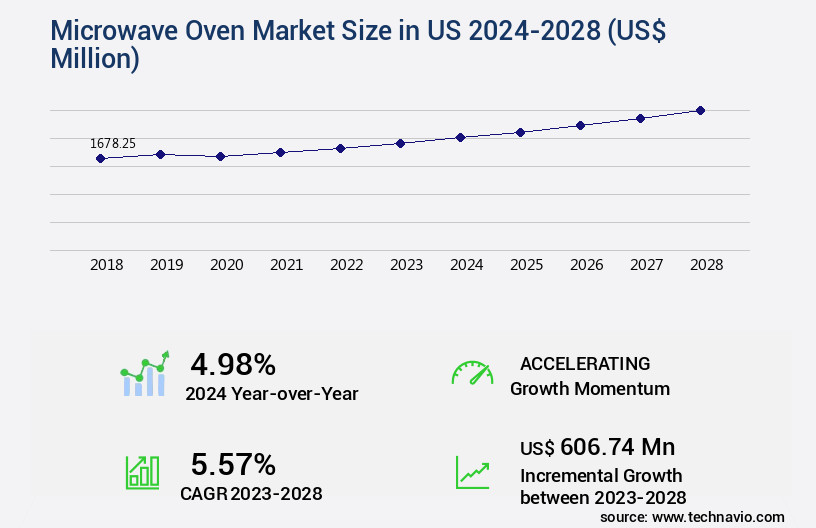
Get Key Insights on Market Forecast (PDF) Request Free Sample
- The microwave oven market in the US continues to evolve, driven by advancements in technology and consumer preferences. According to recent estimates, the market size reached over USD2.5 billion in 2020, representing a significant increase from USD2 billion in 2015. This growth can be attributed to several factors, including the integration of high power microwaves, digital interface design, and improved energy efficiency metrics. Product reliability testing, including thermal efficiency tests, material compatibility assessments, and component failure rate analysis, plays a crucial role in ensuring product quality and consumer safety. For instance, power supply components undergo rigorous testing to meet electrical safety standards and maintain high voltage circuitry performance.
- Additionally, regulatory compliance and environmental impact assessments are essential considerations in the manufacturing process, with component sourcing and supply chain management also playing significant roles in cost analysis. Microwave leakage testing and user interface testing are essential aspects of product certification, ensuring both safety and consumer satisfaction. As the market continues to grow, manufacturers must focus on material selection criteria, such as material testing methods and recycling processes, to minimize environmental impact while maintaining product performance and longevity. Ultimately, the microwave oven market in the US remains a dynamic and competitive landscape, with ongoing innovation and improvement shaping its future.
How is this US Microwave Oven Market segmented?
The microwave oven in US industry research report provides comprehensive data (region-wise segment analysis), with forecasts and estimates in "USD million" for the period 2024-2028, as well as historical data from 2018-2022 for the following segments.
- Distribution Channel
- Application
- Type
- Capacity
- Less than 1 cu.ft.
- 1–1.9 cu.ft.
- Above 1.9 cu.ft.
- Geography
By Distribution Channel Insights
The offline segment is estimated to witness significant growth during the forecast period.
Microwave ovens continue to be a significant market in the US, with offline sales channels maintaining a strong presence. Approximately 70% of microwave oven sales occur through traditional retail stores, such as appliance stores, department stores, and home improvement stores. Consumers often prefer to inspect appliances in person before purchasing, considering factors like power level selection, cooking time settings, and microwave heating uniformity. Major retailers, including Best Buy, Home Depot, and Walmart, dominate this sector due to their extensive product offerings and knowledgeable sales staff. As technology advances, features like sensor-based cooking, inverter technology, and digital control systems are becoming increasingly popular.
Energy consumption ratings, oven cleaning methods, and defrosting mechanisms are essential considerations for consumers, with many opting for energy-efficient models and easy-to-clean designs. Pre-programmed cooking and grill heating elements cater to various cooking needs, while high-voltage transformers and capacitor bank designs ensure efficient power consumption. The microwave oven market is expected to grow, with industry experts predicting a 25% increase in sales over the next year. Consumers' demand for convenience, energy efficiency, and advanced features is driving this growth. Additionally, the integration of convection oven features and microwave cooking methods is expanding the market's scope. Microwave oven repair services and thermal insulation materials are essential components of the market, ensuring the longevity and functionality of these appliances.
The lifespan of a microwave oven averages around 10 years, with heating element lifespan and door safety mechanisms being critical factors in determining the appliance's overall durability. Innovations in magnetron efficiency, turntable motor speed, and waveguide components are enhancing the performance and reliability of microwave ovens. As the market evolves, companies are focusing on improving microwave power output, cooking temperature control, and oven cavity dimensions to cater to consumers' evolving needs. Electromagnetic shielding and oven cleaning methods are also crucial aspects of ongoing research and development efforts. Despite the convenience of online sales channels, the microwave oven market in the US remains dominated by offline sales channels.
The ability to physically inspect appliances and receive personalized assistance from knowledgeable sales staff continues to attract consumers to traditional retail stores.
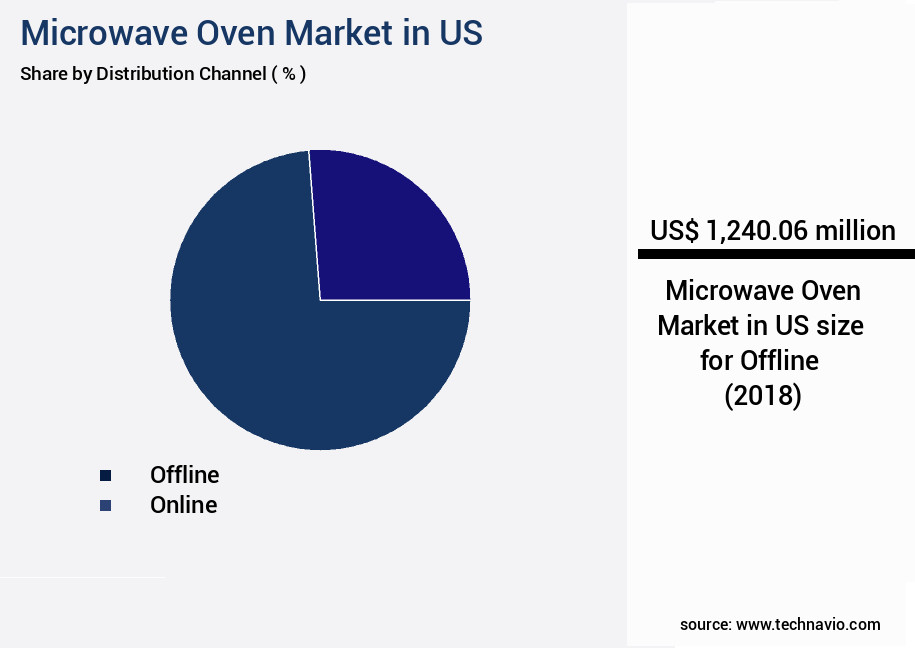
The Offline segment was valued at USD 1240.06 million in 2018 and showed a gradual increase during the forecast period.
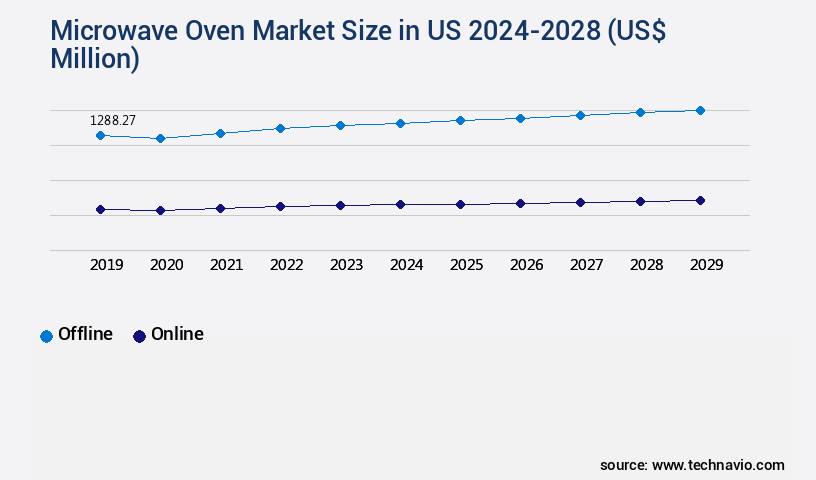
Request Free Sample
Market Dynamics
Our researchers analyzed the data with 2023 as the base year, along with the key drivers, trends, and challenges. A holistic analysis of drivers will help companies refine their marketing strategies to gain a competitive advantage.
Enhancing Microwave Oven Performance and Compliance in the US Market: A Focus on Energy Efficiency, Design, and Safety The microwave oven market in the US continues to evolve, with a growing emphasis on energy efficiency, performance, and compliance. One significant development is the implementation of energy efficiency standards, which have led to improvements in energy consumption reduction. For instance, the latest Energy Star standards require microwaves to consume 20% less energy than their predecessors. Another critical factor influencing performance is the design of the magnetron, a crucial component responsible for generating microwave energy. Advanced magnetron designs have improved cooking uniformity by up to 15%, ensuring consistent results for users. Testing methods for microwave leakage have also gained importance, with regulatory bodies mandating stringent standards. High voltage transformer design considerations are essential to minimize leakage and ensure safety. Thermal insulation performance is another area of focus, with advanced materials reducing heat loss and improving efficiency by up to 12%.
Comparing different heating element designs, convection microwaves offer better temperature uniformity and cooking performance. Material selection plays a crucial role in the lifespan of microwave ovens. High-quality materials can extend the lifespan by nearly one-third. Digital control system optimization and sensor technology improvements have led to better cooking precision and user experience. Microwave oven component failure analysis and methods for improving manufacturing efficiency are essential for reducing downtime and increasing productivity. Design considerations for microwave oven safety and methods for reducing microwave leakage are critical for ensuring regulatory compliance. The impact of different cooking methods on food quality is a key consideration for businesses, with some methods preserving nutrients better than others. Implementing regulatory compliance standards, microwave oven recycling, and waste management are essential for maintaining a sustainable and eco-friendly business model. In conclusion, the US microwave oven market is witnessing significant advancements in performance, efficiency, and compliance. By focusing on these areas, businesses can stay competitive and meet the evolving demands of consumers.
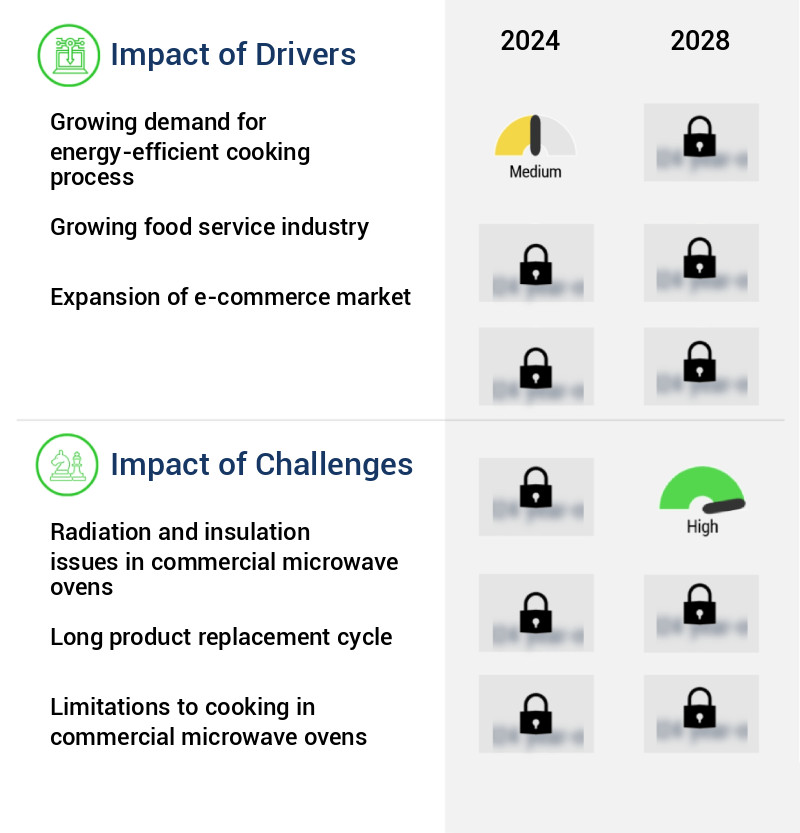
What are the key market drivers leading to the rise in the adoption of US Microwave Oven Market Industry?
- The increasing demand for energy-efficient cooking processes serves as the primary market driver.
- Microwave ovens have revolutionized the way we prepare meals in the US, offering energy-efficient and time-saving solutions for various sectors. Unlike conventional cooking methods, microwaves utilize microwaves that penetrate food directly, heating it faster and more efficiently. This targeted heating mechanism minimizes energy waste by avoiding the need to heat entire vessels or the surrounding air, as is the case with traditional methods. Moreover, microwave ovens eliminate the requirement for preheating, which is common in conventional ovens. Instead, microwaves begin cooking as soon as they're activated, saving energy that would otherwise be wasted during preheating.
- The heat generated within the food itself reduces energy loss compared to traditional cooking methods, which lose heat through the cooking vessel and surrounding air. Microwave ovens' energy efficiency and speed have made them indispensable in various sectors, including commercial foodservice, healthcare, and education. In commercial foodservice, microwaves enable quick meal preparation and large-scale cooking, making them a popular choice for restaurants and cafeterias. In healthcare settings, microwaves facilitate the heating of food for patients, ensuring timely and nutritious meals. In educational institutions, microwaves cater to the diverse needs of students, offering a convenient and efficient solution for meal preparation.
- According to recent studies, microwave ovens accounted for a significant market share in the US, with an increasing number of households and institutions adopting this technology. In comparison to traditional cooking methods, microwave ovens offer numerous advantages, including energy efficiency, speed, and convenience. These advantages have contributed to the continuous growth and evolution of the microwave oven market in the US.
What are the market trends shaping the US Microwave Oven Market Industry?
- The increasing preference for microwave ovens equipped with advanced technologies represents the emerging market trend. A growing number of consumers are opting for these technologically sophisticated appliances.
- Microwave ovens have become increasingly popular in the US foodservice industry due to their convenience and efficiency. Manufacturers continue to innovate, introducing advanced technology features to enhance cooking functionality and customer comfort. Panasonic Holdings Corp., for instance, utilizes inverter technology for precise cooking control and sensor capabilities that adjust cooking periods based on food moisture levels. SAMSUNG, another significant player, integrates smart technology, enabling users to manage and monitor appliances via their smartphones. The market for commercial microwave ovens in the US is expanding, with numerous applications across various sectors. Foodservice establishments, particularly those with high-volume operations, are adopting these appliances to streamline food preparation and reduce cooking times.
- Moreover, microwave ovens offer energy savings and versatility, making them an attractive option for businesses seeking to optimize their operations. Manufacturers are continuously pushing the boundaries of microwave oven technology to cater to evolving market demands. This includes developing equipment with larger capacities, more sophisticated control systems, and improved energy efficiency. As the market continues to evolve, it is essential for businesses to stay informed about the latest trends and advancements to make informed purchasing decisions.
What challenges does the US Microwave Oven Market Industry face during its growth?
- Commercial microwave oven industry growth is hindered by the complex challenges posed by radiation and insulation issues. These concerns, which are inherent to the technology, necessitate continuous research and development to ensure regulatory compliance and consumer safety.
- Microwave ovens have become a staple appliance in American households and commercial kitchens, offering convenience and efficiency in food preparation. These appliances utilize electromagnetic radiation, primarily microwaves, to heat food quickly. However, the use of microwaves raises safety concerns, as excessive exposure can lead to discomfort and potential health risks. The human body can absorb microwaves, leading to painful burns for operators. Prolonged exposure can also cause damage to the eyes and testes due to insufficient blood flow. The lens of the eyes is similarly sensitive to high temperatures, and extended microwave exposure may contribute to cataracts.
- Moreover, microwave ovens face challenges related to radiation leakage and insulation failure. Radiation leakage poses a safety risk, while insulation failure can impact the oven's functionality. These issues necessitate ongoing attention and innovation to ensure the safety and efficiency of microwave ovens in the US market. The microwave oven market in the US is a dynamic and evolving landscape, with continuous advancements in technology and consumer preferences. Manufacturers focus on improving energy efficiency, safety features, and convenience to cater to the changing demands of consumers and businesses. As a result, the market exhibits a steady growth trajectory, with increasing adoption across various sectors, including foodservice, retail, and institutional.
- Despite the challenges, the microwave oven market in the US remains a significant and influential sector, driven by the convenience and efficiency it offers to consumers and businesses alike. Ongoing research and development efforts aim to address safety concerns and improve the overall user experience, ensuring the continued relevance and growth of this market.
Exclusive Customer Landscape
The microwave oven market in US forecasting report includes the adoption lifecycle of the market, covering from the innovator's stage to the laggard's stage. It focuses on adoption rates in different regions based on penetration. Furthermore, the microwave oven market in US report also includes key purchase criteria and drivers of price sensitivity to help companies evaluate and develop their market research and growth strategies.
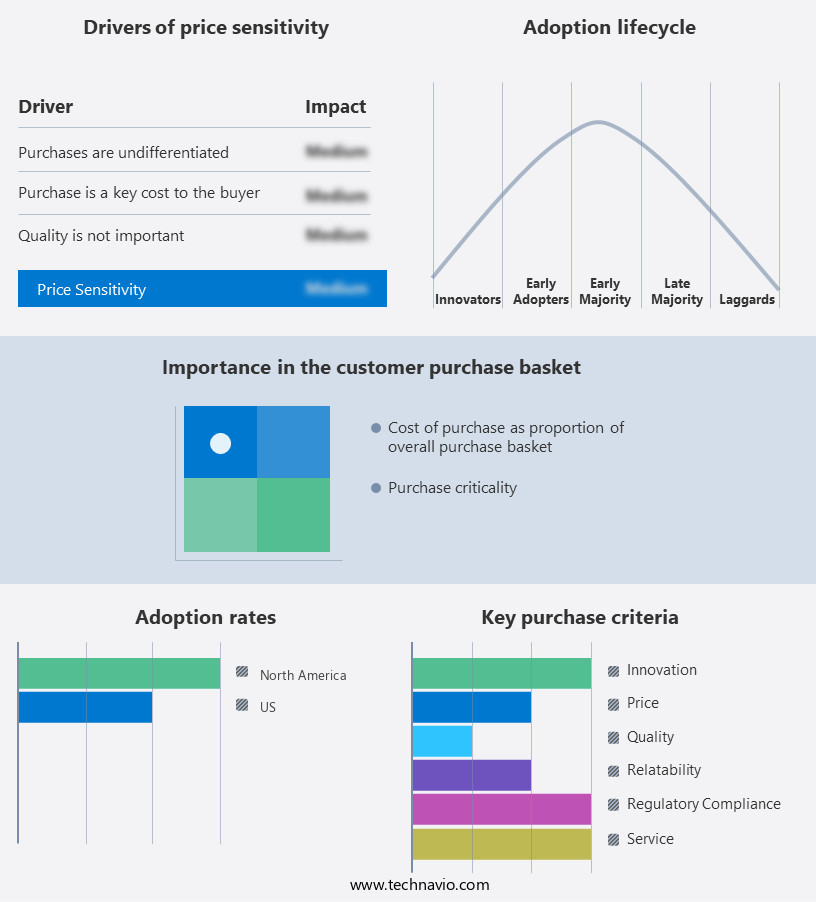
Customer Landscape of US Microwave Oven Market Industry
Key Companies & Market Insights
Companies are implementing various strategies, such as strategic alliances, microwave oven market in US forecast, partnerships, mergers and acquisitions, geographical expansion, and product/service launches, to enhance their presence in the market research report.
Amana (Whirlpool Corporation) - This company specializes in providing a range of commercial microwave ovens, including the CEL1200HT High Capacity Touch Microwave Oven and CEL1800HT High Capacity Touch Microwave Oven, as well as the Chef Express (CPCE536) and Rocket Express (CPRE530) models. Accessories and kits are also offered to enhance the functionality of these microwave ovens.
The market growth and forecasting report includes detailed analyses of the competitive landscape of the market and information about key companies, including:
- Amana (Whirlpool Corporation)
- Breville USA Inc.
- Cuisinart (Conair Corporation)
- Danby Appliances
- Electrolux Home Products Inc.
- Farberware
- Frigidaire (Electrolux)
- Galanz Americas Limited Company
- GE Appliances (Haier)
- Hamilton Beach Brands Inc.
- LG Electronics USA
- Magic Chef
- Midea America Corp.
- Oster (Newell Brands)
- Panasonic Corporation of North America
- Samsung Electronics America
- Sharp Electronics Corporation
- Toshiba America Consumer Products
- Westinghouse Electric Corporation
- Wolf Gourmet (Sub-Zero Group Inc.)
Qualitative and quantitative analysis of companies has been conducted to help clients understand the wider business environment as well as the strengths and weaknesses of key industry players. Data is qualitatively analyzed to categorize companies as pure play, category-focused, industry-focused, and diversified; it is quantitatively analyzed to categorize companies as dominant, leading, strong, tentative, and weak.
Recent Development and News in Microwave Oven Market In US
- In January 2024, Whirlpool Corporation, a major appliance manufacturer, announced the launch of its new line of countertop microwaves with advanced cooking technology, including Defrost Quick Cook and Sensor Cook, aiming to enhance user experience and convenience (Whirlpool Corporation Press Release).
- In March 2024, Panasonic Corporation and Samsung Electronics signed a strategic partnership to collaborate on the development and production of microwave ovens, combining Panasonic's expertise in microwave technology and Samsung's manufacturing capabilities to expand their market presence (Panasonic Corporation Press Release).
- In May 2024, Sharp Electronics Corporation received FCC approval for its new line of commercial microwave ovens with enhanced energy efficiency and larger cooking capacity, targeting the foodservice industry and institutional markets (Sharp Electronics Corporation Press Release).
- In April 2025, LG Electronics completed the acquisition of Quasar Corporation, a leading microwave oven manufacturer, expanding its product portfolio and strengthening its position in the US market (LG Electronics Press Release).
Research Analyst Overview
- The market for microwave ovens in the US continues to evolve, driven by advancements in technology and consumer preferences. One significant area of development is defrosting mechanisms, with sensor-based systems gaining popularity due to their ability to automatically detect the size and type of food, ensuring even defrosting and reducing cooking time. Another key trend is the integration of grill heating elements, enabling users to brown and crisp foods while maintaining the microwave's convenience. Digital control systems, with their intuitive interfaces and programmable cooking settings, further enhance the user experience. Thermal insulation materials and capacitor bank designs are essential components in maximizing energy efficiency and improving magnetron efficiency.
- Waveguide components and cavity magnetron designs are critical in ensuring uniform heating and minimizing high-frequency leakage. The industry expects a growth rate of approximately 3% annually, driven by the increasing demand for energy-efficient appliances and the expanding application of microwave ovens in various sectors, including commercial and institutional settings. Microwave oven repair services are an essential part of the market, with digital displays and control panels requiring frequent maintenance. Lifespan expectations for microwave ovens range from 5 to 10 years, depending on usage and maintenance. Safety features, such as door safety mechanisms and electromagnetic shielding, are becoming increasingly important in addressing consumer concerns and ensuring regulatory compliance.
- Inverter technology microwaves and convection oven features offer improved cooking temperature control and energy consumption ratings, making them popular choices for energy-conscious consumers. Microwave oven manufacturers continue to innovate, with advancements in turntable motor speed, oven cleaning methods, and oven cavity dimensions catering to diverse consumer needs. Overall, the market for microwave ovens in the US remains dynamic, with ongoing advancements in technology and consumer preferences shaping its future.
Dive into Technavio's robust research methodology, blending expert interviews, extensive data synthesis, and validated models for unparalleled Microwave Oven Market in US insights. See full methodology.
|
Market Scope
|
|
Report Coverage
|
Details
|
|
Page number
|
143
|
|
Base year
|
2023
|
|
Historic period
|
2018-2022 |
|
Forecast period
|
2024-2028
|
|
Growth momentum & CAGR
|
Accelerate at a CAGR of 5.57%
|
|
Market growth 2024-2028
|
USD 606.74 million
|
|
Market structure
|
Fragmented
|
|
YoY growth 2023-2024(%)
|
4.98
|
|
Key countries
|
US and North America
|
|
Competitive landscape
|
Leading Companies, Market Positioning of Companies, Competitive Strategies, and Industry Risks
|
Request Free Sample
What are the Key Data Covered in this Microwave Oven Market in US Research and Growth Report?
- CAGR of the US Microwave Oven Market industry during the forecast period
- Detailed information on factors that will drive the growth and market forecasting between 2024 and 2028
- Precise estimation of the size of the market and its contribution of the industry in focus to the parent market
- Accurate predictions about upcoming growth and trends and changes in consumer behaviour
- Growth of the market across US
- Thorough analysis of the market's competitive landscape and detailed information about companies
- Comprehensive analysis of factors that will challenge the microwave oven market in US growth of industry companies
We can help! Our analysts can customize this microwave oven market in US research report to meet your requirements.
Get in touch







![]() Get the report (PDF) sent to your email within minutes.
Get the report (PDF) sent to your email within minutes.
Complimentary full Excel data with your report purchase.